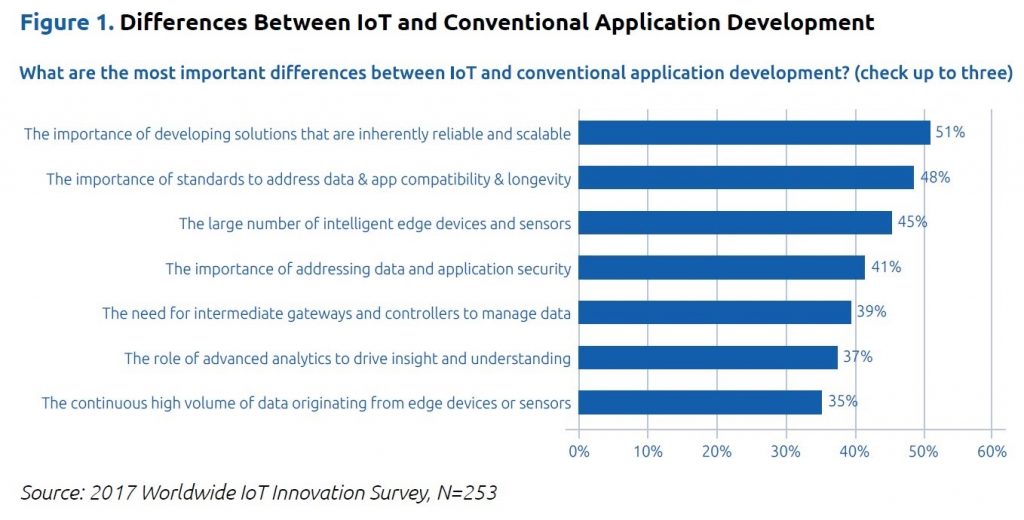

New Applications of IoT – Changing Web Development
IoT software development is facing a unique challenge. In this environment, how should developers solve the subtle problems of IoT systems?

IoT is truly a game changer. This technology affects not only consumers but also providers of IoT solutions. The Internet of Things has brought changes to software development on many levels, including web development. Whether on the backend or the frontend, complex IoT networks create new challenges for network developers. So, how do IoT systems differ from traditional web development in the non-connected world? Below we’ll dig into the key features of IoT projects and find out how they impact web development.
The place of web development in the Internet of Things
If you’re wondering why we’re discussing IoT and web development in the first place, we’re going to have to elaborate. The network to which the device is connected relies on a network server. The data obtained from the sensors is stored in the cloud. High-level messaging protocols are responsible for communication between devices. And its user interface will help other users interact directly with connected devices.
On top of that, website content can be displayed on many IoT devices, including user interfaces on TVs, laptops, wearables, smart appliances and industrial displays. Some people can search related web pages through their browsers, such as Amazon's Echo and its virtual assistant Alexa. As you can see, web development and design are actually an important part of an IoT project.
The difference between IoT development and ordinary web development
First, IoT networks are often much more complex than ordinary network applications. They must deal with large amounts of data, intensive communications, dynamic user interfaces, and security and reliability issues. The characteristics of the Internet of Things system include the following aspects:
1. Collect large amounts of data
Basically, IoT systems deal with huge amounts of data. They collect real-time data from sensors, filter and process it, and transmit this data to and from the cloud. Such large amounts of data can cause network delays. Furthermore, losing any bit of data would be unacceptable. This is why IoT network development pays more attention to the scalability and reliability of the system than ordinary network development.
Scalability ensures that data collection and distribution are independent of data volume. Reliability means uninterrupted data collection and distribution. That’s why IoT developers choose languages and solutions that facilitate scalable applications, such as Java, C, and JavaScript. Furthermore, in the development of IoT, it is important to transmit large amounts of data through appropriate advanced protocols. The protocols used include XMPP for real-time communication and AMQP for message-oriented data reception/transmission.
According to the RTInsights survey, the software developers interviewed by 51% all stated that the importance of IoT solutions lies in their reliability and scalability. According to them, the following are the main differences between IoT application development and traditional application development.

Furthermore, communication in IoT networks often consumes a large amount of energy. That’s why they need to be designed with minimal energy use in mind. Advanced messaging protocols and high-bandwidth interconnects can help pages load faster.
2. Dynamic user interface
The user interface helps users interact with IoT systems. They display valuable insights from the collected data and help manage the entire network. Since an IoT system typically collects large amounts of different types of data, it must display a large number of analytics and infographics. Streamlined user dashboards are a common design solution.
Control of IoT networks requires dynamic user interface solutions. Dynamic graphical interfaces are ideal for complex IoT applications as they allow dynamic generation of portlets or pages, which is particularly useful when multitasking.
3. Advanced security
While security has always been a concern in traditional web development, in the IoT its importance is much greater. McKinsey believes that security is the main challenge facing the growth of IoT. It’s obvious that smart devices should be protected from external interference to keep networks and data safe. Obviously, this is the job of web development.
The Open Web Application Security Project (OWASP) ranks network interfaces as the number one vulnerability in IoT systems. Insufficient authentication/authorization ranks second on the list of items. The main vulnerabilities in IoT systems actually lie in the area of network development and design, not the hardware. This is why IoT web design must focus on system security. To ensure secure access, IoT developers often create advanced user authentication and user access management. You must ensure data and communications in the network are protected through encryption.
Development Trends of IoT Networks
While the future of IoT is multilingual, some languages are leading the way in IoT solution development. According to the 2018 IoT Developer Survey, Java, C, and JavaScript are the top three languages for building IoT solutions. Java and C are commonly used for programming devices and gateways, while JavaScript is geared toward web development. And, since JavaScript dominates websites (95%’s website is built on JavaScript), it will occupy a special place in the development of the Internet of Things for a long time. JavaScript frameworks are also popular in IoT. In addition to Node.js, IoT developers also use Johnny-five.io, Zetta.js, Cylon.js and Nodered.
Summarize
IoT applications have their own uniqueness and these uniqueness are affecting the web development of these applications. Since IoT systems are data-enhanced, network developers must ensure their reliability and scalability. IoT requires dynamic user interface solutions, and its weak point is the web interface. So make sure to protect it using authentication and encryption.
Original author: ELIFTECH
This article is from a translation, if you want to reprint, please obtain authorization from this site first.
